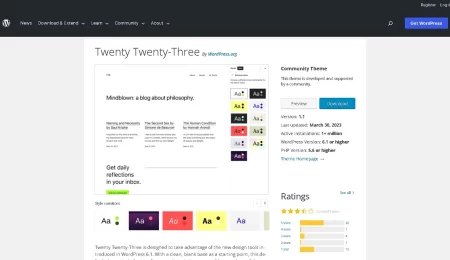HTML is still relevant?
HTML: In today’s rapidly evolving digital landscape, the relevance of HTML (HyperText Markup Language) continues to be a topic of discussion among web developers and designers. Understanding HTML’s enduring significance requires a look into its foundational role in web development and its evolution over the years.
What is HTML?
HTML is the fundamental building block of the World Wide Web. It defines the structure and layout of a web page through a series of elements and tags. These elements include headings, paragraphs, images, links, and more, allowing developers to create structured documents that browsers can interpret and display.
Basic Structure of an HTML Document
An HTML document typically starts with a <!DOCTYPE html> declaration, followed by <html>, <head>, and <body> tags. This structure forms the skeleton of every web page and provides a framework for content presentation.
Importance of Semantic HTML
Semantic HTML enhances the accessibility and SEO-friendliness of a website by accurately describing the content’s meaning. Elements like <header>, <nav>, <article>, and <footer> not only organize content for developers but also help search engines understand the context and relevance of each section.
History of HTML
HTML was first introduced by Tim Berners-Lee in 1991 as a means to share documents across the then-nascent World Wide Web. Since its inception, HTML has undergone several major revisions to accommodate new technologies and enhance functionality.
Major Versions and Their Features
- HTML4: Introduced in 1997, HTML4 brought improvements in form controls, tables, and scripting capabilities.
- XHTML: An XML-based version of HTML aimed at stricter syntax and compatibility with other XML languages.
- HTML5: Released in 2014, HTML5 introduced new semantic elements, multimedia support, offline web application capabilities, and improved APIs for a richer user experience.
Current Importance of HTML
Despite the rise of dynamic web applications and JavaScript frameworks, HTML remains a cornerstone of web development.
Role of HTML in Modern Web Development
HTML provides the structure and semantics necessary for content presentation and user interaction on the web. It serves as a foundation upon which CSS (Cascading Style Sheets) and JavaScript add styling and interactivity, respectively.
Compatibility with Other Technologies
HTML seamlessly integrates with CSS for styling and layout, as well as JavaScript for dynamic behavior. This compatibility ensures that modern web applications can leverage HTML’s structure while incorporating advanced functionalities.
Advantages of HTML
HTML offers several advantages that contribute to its ongoing relevance in web development.
Accessibility Benefits
Semantic HTML promotes accessibility by providing a clear structure and hierarchy to content, making it easier for assistive technologies to interpret and present information to users with disabilities.
SEO Advantages of Semantic HTML
Search engines rely on HTML markup to understand the content and relevance of web pages. Semantic HTML helps improve SEO rankings by accurately describing the meaning of content elements.
Cross-Platform Compatibility
HTML documents can be accessed and rendered consistently across different devices and platforms, ensuring a uniform user experience regardless of the user’s device or operating system.
HTML5 Features
HTML5 introduced several features that enhance the capabilities of web development.
New Features and Elements in HTML5
<canvas>and<svg>: Graphics and animation capabilities directly within HTML.<video>and<audio>: Native support for embedding multimedia content.- Improved Form Elements: Including
<input>types and attributes for better user interaction.
Impact of HTML5 on Web Development
The adoption of HTML5 has facilitated the development of responsive and interactive web applications, reducing the reliance on plugins like Adobe Flash and improving overall performance and security.
Challenges Facing HTML
Despite its strengths, HTML is not without its challenges and criticisms.
Criticisms and Misconceptions
Some developers argue that HTML can be verbose, especially when compared to more concise frameworks and languages like React or Angular. Additionally, the perceived simplicity of HTML may lead to underestimating its capabilities in modern web development.
Competition from Other Technologies
Frameworks like React, Angular, and Vue.js have gained popularity for their ability to create dynamic and single-page applications. These frameworks offer enhanced interactivity and state management, challenging HTML’s traditional role.
HTML in Responsive Web Design
Responsive web design relies heavily on HTML to create adaptable layouts that adjust seamlessly across different screen sizes and devices.
Importance in Creating Responsive Websites
HTML’s semantic structure and fluid layout capabilities are foundational to responsive design principles. Elements such as media queries and flexible grids complement HTML’s structure, ensuring optimal viewing experiences on various devices.
The Future of HTML
Looking ahead, HTML is expected to continue evolving to meet the demands of an increasingly interconnected digital landscape.
Predictions for HTML in the Next Decade
Future iterations of HTML are likely to focus on enhancing accessibility, improving performance, and integrating seamlessly with emerging technologies such as AI and augmented reality.
Innovations and Enhancements Expected in HTML
Potential innovations may include more robust APIs for handling complex data interactions, enhanced support for interactive multimedia content, and further standardization of web components.
Case Studies: Successful Use of HTML
Examining real-world examples demonstrates HTML’s versatility and enduring relevance in web development.
Examples of Websites Leveraging HTML Effectively
- Wikipedia: Relies on semantic HTML to structure vast amounts of content for easy navigation and accessibility.
- Medium: Uses HTML5 elements and responsive design principles to deliver a consistent reading experience across devices.
Case Studies Demonstrating HTML’s Role in Web Development
From e-commerce platforms to educational resources, HTML remains integral to creating user-friendly interfaces and accessible content.




Leave a Comment